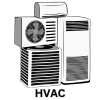In vehicle engineering, kinematics and dynamics describe two different but connected ways of understanding a car’s motion.
1. Vehicle Kinematics – Motion without considering forces
Kinematics answers “what motion does the car experience?”
It describes positions, velocities, and accelerations of the vehicle and its subsystems without looking at the forces causing them.
Main aspects:
- Vehicle Motion States
- Linear motion → forward/backward (surge), sideways (sway), vertical (heave)
- Angular motion → roll, pitch, yaw
- Steering Geometry (Ackermann)
- Wheel angles during turning (inner wheel steers more than outer)
- Turning radius, slip angles, path curvature
- Wheel & Suspension Kinematics
- Camber gain, toe change, caster effect, kingpin inclination
- How suspension linkages guide wheel movement (multi-link, double wishbone, MacPherson strut)
- Trajectory & Path Tracking
- Lateral displacement, yaw angle, sideslip, turning circle, lane change path
👉 Example: Kinematics tells you that if you steer 30° left at 40 km/h, the car follows a curved path of radius R. It does not explain why the car is able to follow that curve—that’s dynamics.
2. Vehicle Dynamics – Motion + forces & torques
Dynamics answers “why does the car move that way?”
It studies the forces and moments acting on the vehicle and how they produce the kinematic motion.
Main aspects:
- Newton’s Laws applied to vehicles → F=maF = m aF=ma, M=IαM = I \alphaM=Iα
- Tire Dynamics
- Longitudinal slip (acceleration/braking)
- Slip angle (cornering)
- Friction circle (combined grip limits)
- Weight Transfer
- Longitudinal (braking/accel)
- Lateral (cornering)
- Longitudinal Dynamics → acceleration, traction limits, braking performance
- Lateral Dynamics → understeer, oversteer, yaw stability
- Vertical Dynamics → ride comfort, suspension forces, vibration modes
- Aerodynamics → drag, lift/downforce, stability in crosswinds
👉 Example: Dynamics explains that when you steer left at 40 km/h, tyre lateral forces + centripetal force balance → producing a curve of radius R. If friction is too low, tyres slide, and the actual path differs from the kinematic prediction.
Key Difference
- Kinematics = Motion description (geometry + path)
- Dynamics = Motion + Forces (why motion happens, stability, limits)
Both are interdependent: engineers use kinematics for steering/suspension design, and dynamics for handling, ride, and safety systems (ABS, ESC, traction control).
Summary:
- Kinematics = Geometry & movement relationships
- Dynamics = Forces, moments & vehicle behavior under real conditions
Other courses:



